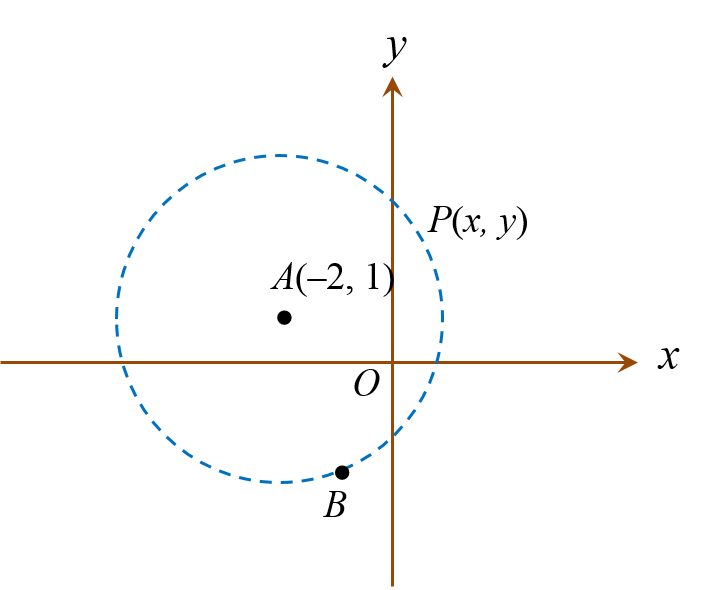Question 9:
Solution by scale drawing is not accepted.
Diagram 5 shows the path of a moving point P(x, y). P always moves at a constant distance from point A.
 Diagram 5
Diagram 5
B(–1, –2) and R(–5, q) lie on path of point P. The straight line BC is a tangent to the path and
intersects the x-axis at point C.
Find
(a) the equation of the path of point P, [3 marks]
(b) the possible values of q, [2 marks]
(c) the area of ∆ ABC. [5 marks]
Solution:
(a)
(b)
When x = –5, y = q,
(–5)2 + q2 + 4(–5) – 2q – 5 = 0
25 + q2 – 20 – 2q – 5 = 0
q2 – 2q = 0
q(q – 2) = 0
q = 0, q = 2
(c)
Solution by scale drawing is not accepted.
Diagram 5 shows the path of a moving point P(x, y). P always moves at a constant distance from point A.
 Diagram 5
Diagram 5B(–1, –2) and R(–5, q) lie on path of point P. The straight line BC is a tangent to the path and
intersects the x-axis at point C.
Find
(a) the equation of the path of point P, [3 marks]
(b) the possible values of q, [2 marks]
(c) the area of ∆ ABC. [5 marks]
Solution:
(a)
(b)
When x = –5, y = q,
(–5)2 + q2 + 4(–5) – 2q – 5 = 0
25 + q2 – 20 – 2q – 5 = 0
q2 – 2q = 0
q(q – 2) = 0
q = 0, q = 2
(c)